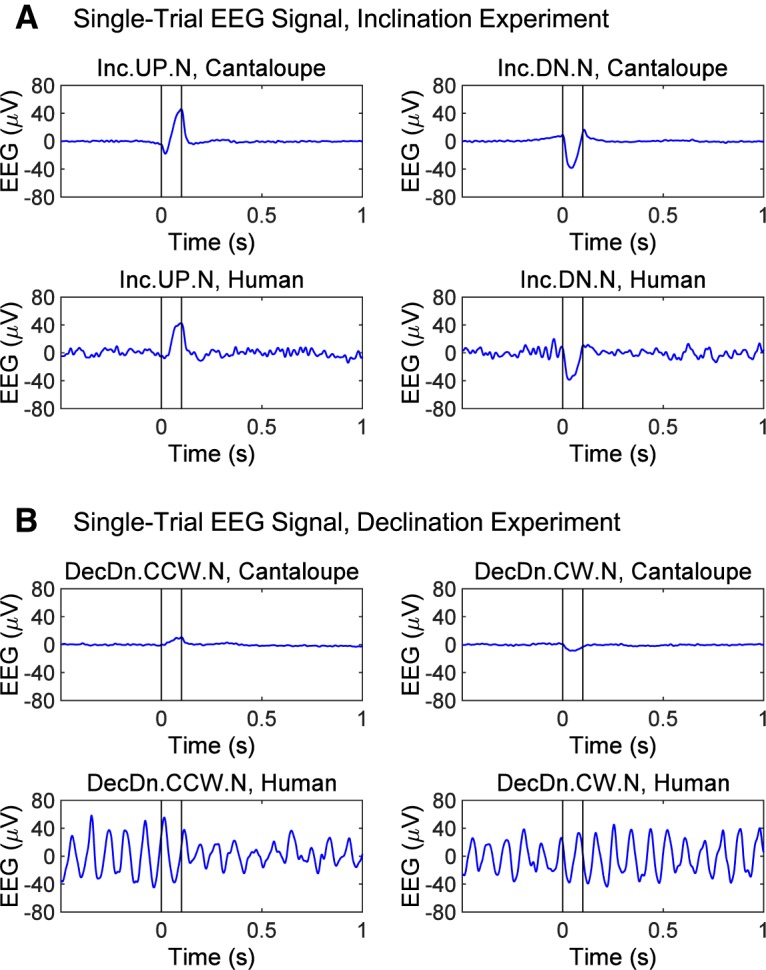Figure 4.

Examples of single-trial, time-domain, bandpass-filtered (1–50 Hz) EEG traces at electrode Fz from phantom (cantaloupe) and human participants (one with low and one with high baseline alpha-power) that illustrate the type of data gathered in this study. A, Effect of a 0.1 s inclination sweep of a Northward-pointing, 35-µT magnetic field rotating between a dip of 75° down to 75° up (Inc.UP.N, left panels) and the reverse (Inc.DN.N, right panels). This is the largest stimulus used in our experiments (150° arc, effective frequency 4.2 Hz, with the full vector of 35-µT undergoing rotation). The cantaloupe records an ∼40-µV artifact during the sweep interval but is otherwise flat. A similar artifact can be seen on humans with low alpha-power but is invisible in humans with high alpha-power without trial-averaging. B, Effect of a 0.1-s declination sweep of the horizonal magnetic component (inclination = +75°, total field = 35 µT, so horizontal component = 9.1 µT) rotating from NE to NW in the presence of a static, downward directed vertical magnetic field (33.8 µT; DecDn.CCW.N) and the reverse (DecDn.CW.N). This is a weaker electrical stimulus than used in A (only a 90° arc, a lower effective frequency of 2.5 Hz, and a quarter the field intensity). The cantaloupe shows only a weak artifact of <10 µV during the rotation. In most humans with high or low alpha-power, this artifact is hard to detect without extensive averaging. Artifacts of this sort are phase-locked to the stimulus and are easily removed using standard techniques for analyzing non-phase-locked power as noted in the EEG Methods section. Note that this human example shows an obvious drop in the alpha-power following the CCW rotation but not the CW rotation.
